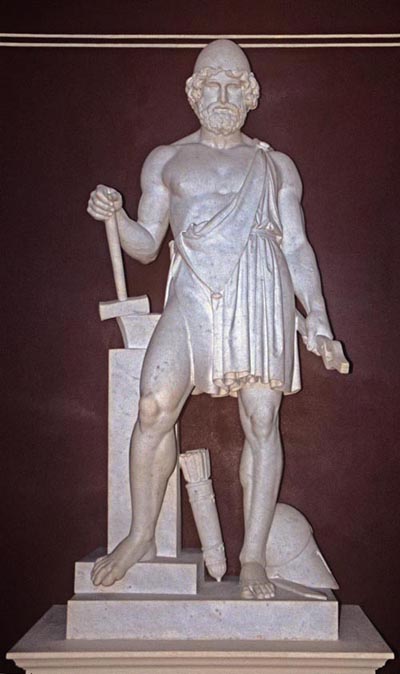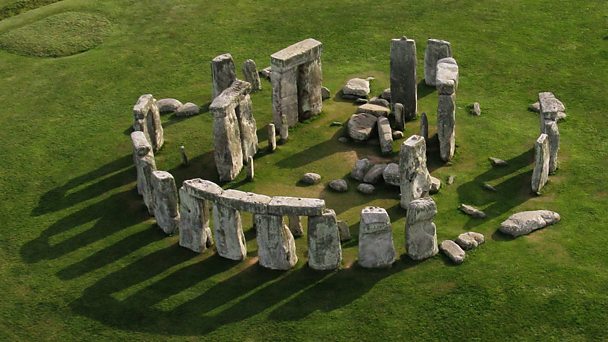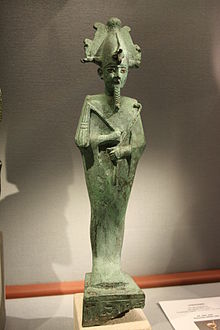Ebb and Flow used to describe something that changes in a regular and repeated way
- the ebb and flow of the tide
- the ebb and flow of human history
The following includes a large list of mythological gods. To read more about greek mythology, here is a link to Thomas Bulfinch’s book, Bulfinch’s Mythology: http://www.sacred-texts.com/cla/bulf/index.htm

Poseidon was god of the sea, earthquakes, storms, and horses and is considered one of the most bad-tempered, moody and greedy Olympian gods. He was known to be vengeful when insulted.

Persephone’s abduction: Persephone was the goddess of the underworld, springtime, flowers and vegetation. Hades, the lord of the Underworld, was getting lonely and depressed in his gloomy domain. He gazed up to the earth, spotted beautiful Persephone. He decided that he must have her. Hades hitched up his chariot and was soon riding up towards the daylight. Persephone heard a rumbling sound and, worried, ran off in search of her mother. She didn’t get very far when a hole appeared in the ground, and out rode Hades. The god grabbed Persephone, put her in his chariot, and rode back into the ground before anyone could see him. Persephone’s liberation from the Underworld for half of the year signaled the arrival of spring, and her return to the Underworld signaled the start of the winter.

Vulcan Vulcan is the god of fire including the fire of volcanoes, metalworking, and the forge in ancient Roman religion and myth. Vulcan is often depicted with a blacksmith’s hammer. The Vulcanalia was the annual festival held August 23 in his honor. His Greek counterpart is Hephaestus, the god of fire and smithery

Eros In Greek mythology, Eros, “Desire,” was the Greek god of sexual attraction. His Roman counterpart was Cupid (“desire”). Some myths make him a primordial god, while in other myths, he is the son of Aphrodite. He was one of the winged love gods, Erotes.
/GettyImages-3166563-1--56aacb125f9b58b7d008f82b.jpg)
Apollo is one of the most important and complex of the Olympian deities in classical Greek and Roman religion and Greek and Roman mythology. Apollo has been variously recognized as a god of music, truth and prophecy, healing, the sun and light, plague, poetry, and more. Apollo is the son of Zeus and Leto, and has a twin sister, the chaste huntress Artemis.

Zeus was the god of the sky and ruler of the Olympian gods. He overthrew his father, Cronus, and then drew lots with his brothers Poseidon and Hades, in order to decide who would succeed their father on the throne. Zeus won the draw and became the supreme ruler of the gods, as well as lord of the sky and rain. His weapon was a thunderbolt which he hurled at those who displeased or defied him, especially liars and oathbreakers. He was married to Hera but often tested her patience, as he was infamous for his many affairs.
Pagans were followers of an ancient religion that worshiped several gods (polytheistic). Today, pagan is used to describe someone who doesn’t go to synagogue, church, or mosque. It could be that they worship several gods at once, or they have no interest in a god at all. Pagan Deities are ancient gods that were associated with various aspects of the human experience – love, death, marriage, fertility, and so forth. Still others are connected to different phases of the agricultural cycle, the moon, and the sun.

Stonehenge is perhaps the world’s most famous prehistoric monument. It was built in several stages: the first monument was an early henge monument, built about 5,000 years ago, and the unique stone circle was erected in the late Neolithic period about 2500 BC. In the early Bronze Age many burial mounds were built nearby.

Cyclops in Greek mythology and later Roman mythology, is a member of a primordial race of giants, each with a single eye in the center of his forehead. The word “cyclops” literally means “round-eyed” or “circle-eyed”. Hesiod described three one-eyed cyclopes who served as builders, blacksmiths, and craftsmen: Brontes, Steropes and Arges.

Baal (also rendered Baʿal) in the Bible was an important Canaanite god, often portrayed as the primary enemy of the Hebrew God Yahweh. The Semitic word “baal” (meaning ‘”Lord”) was also used to refer to various deities of the Levant. Baal designated the universal god of fertility, and in that capacity his title was Prince, Lord of the Earth. He was also called the Lord of Rain and Dew, the two forms of moisture that were indispensable for fertile soil in Canaan.

Inana (Sumerian)/Ištar (Akkadian) is among the most important deities and the most important goddess in the Mesopotamian pantheon. She is primarily known as the goddess of sexual love but is equally prominent as the goddess of warfare. In her astral aspect, Inana/Ištar is the planet Venus, the morning and the evening star.
Moderns– noun, a person who advocates or practices a departure from traditional styles or values (typically called moderns).

The Resurrection of Jesus is the Christian religious belief that, after being put to death, Jesus rose again from the dead. It is the central tenet of Christian theology and part of the Nicene Creed: “On the third day he rose again in accordance with the Scriptures”.

The Virgin Mary, also known as St. Mary the Virgin, the Blessed Virgin Mary, Saint Mary, Mary Mother of God or the Virgin Mary is believed by many to be the greatest of all Christian saints. The Virgin Mother “was, after her Son, exalted by divine grace above all angels and men.” Born in Jerusalem, Mary was presented in the Temple and took a vow of virginity. Living in Nazareth, Mary was visited by the archangel Gabriel, who announced to her that she would become the Mother of Jesus, by the Holy Spirit.

Noah’s Ark was a massive ship, built at God’s command, that saved Noah, his family, and two of every kind of land animal from the global flood that took place 4,350 years ago. It was 510 feet long, 85 feet wide, and 51 feet high and easily housed the several thousand animal kinds God brought to Noah.

The Parting of the Red Sea: God chooses Moses to lead the Israelites out of slavery in Egypt and into the land of Canaan, which God has promised to them. The Egyptian pharaoh, who previously said the opposite, agrees to let them go, and they travel from Ramesses to Succoth and then to Etham on the edge of the desert, led by a pillar of cloud by day and a pillar of fire by night. There God tells Moses to turn back and camp by the sea at Pi-hahiroth. According to the Exodus account, Moses held out his staff and the Red Sea was parted by God. The Israelites walked on the exposed dry ground and crossed the sea, followed by the Egyptian army. Moses again moved his staff once the Israelites had crossed and the sea closed again, drowning the whole Egyptian army.

Adam & Eve: according to the creation myth of the Abrahamic religions,as well as Yazidism, they were the first man and woman and the ancestors of all humans.

Burka: is a coat made from felt or karakul (the short curly fur of young lambs of the breed of that name).
Hindu: Hindu refers to any person who regards themselves as culturally, ethnically, or religiously adhering to aspects of Hinduism. It has historically been used as a geographical, cultural, and later religious identifier for people indigenous to South Asia.

Firewalk: Firewalking has been practiced by many people and cultures in all parts of the world, with the earliest known reference dating back to Iron Age India – c. 1200 BC. It is often used as a rite of passage, as a test of an individual’s strength and courage, or in religion as a test of one’s faith.
Grishneshwar Temple Drop: Dan Brown is referring to a religious practice that actually exists. As reported by the New York Times, “some families in rural India — both Hindus and Muslims — are willing to let their babies be tossed off the roof of a shrine, to be caught in a stretched bedsheet about 30 feet below.”
https://www.youtube.com/watch?time_continue=2&v=WbOsEmHzq1c
Scientology: a religious system based on the seeking of self-knowledge and spiritual fulfillment through graded courses of study and training. It was founded by American science fiction writer L. Ron Hubbard (1911–86) in 1955.
Osiris: Osiris is an Egyptian god, identified as the god of the afterlife, the underworld, and the dead, but more appropriately as the god of transition, resurrection, and regeneration. He was classically depicted as a green-skinned deity with a pharaoh’s beard, partially mummy-wrapped at the legs, wearing a distinctive crown with two large ostrich feathers at either side, and holding a symbolic crook and flail.
Debussy: known since the 1890s as Claude-Achille Debussy or Claude Debussy, was a French composer.
“Ordenador“: computer in Spanish
Prometheus: means “forethought” in Greek- he is a Titan in Greek mythology, best known as the deity in Greek mythology who was the creator of mankind and its greatest benefactor, who stole fire from Mount Olympus and gave it to mankind.

Brahma: Brahma is a creator god in Hinduism. He has four faces. Brahma is also known as Svayambhu (self-born), Vāgīśa (Lord of Speech), and the creator of the four Vedas, one from each of his mouths.
Egyptian Book of the Dead: The Book of the Dead is an ancient Egyptian funerary text, used from the beginning of the New Kingdom (around 1550 BCE) to around 50 BCE.
Elysian fields: The Elysian Fields, also called Elysium, is the final resting place of the souls of the heroic and the virtuous in Greek mythology and religion.
Kabbalistic definition of Gilgal reshamt
Theosophical circle of Summerland: The Summerland is the name given by Theosophists, Wiccans and some earth-based contemporary pagan religions to their conceptualization of an afterlife.
Ebb and Flow-Parting of the Red Sea: By Jillian Lessing
Adam&Eve – Theosophical circle of Summerland: By Myrto Ziogas
